Ruger 57 5.7x28mm Pistol, 4.94" Barrel, Adjustable Fiber Optic Sights, Cobalt, Black – 16407 For Sale
$649.99
The Ruger 57 5.7x28mm Pistol stands out as a high-performance and durable firearm, highlighted by its 4.94-inch barrel and adjustable fiber optic sights, wrapped in a distinctive cobalt and black finish. Model 16407 is enhanced with Ruger’s Secure Action fire-control system, featuring a protected internal hammer and bladed-safety trigger for a smooth, reliable, and safe shooting experience. Designed with ergonomics in mind, it offers a comfortable grip and control, with features such as a 1911-style ambidextrous manual safety, robust slide release, and reversible magazine release latch for both right and left-handed shooters. The alloy steel barrel, coated with a black nitride finish, assures enhanced wear resistance and durability, making the Ruger 57 an excellent choice for personal defense or sport shooting, merging advanced technology with user-friendly design.
Is a 5.7 more powerful than a 9mm?
The comparison between a 5.7mm and a 9mm round involves several factors such as velocity, projectile design, and intended use.
– **5.7x28mm**: This cartridge is known for its higher velocity, typically between 2,000 and 2,500 feet per second, and is designed to penetrate body armor. It tends to have a lighter projectile, offering less recoil and a flatter trajectory over longer distances. The FN P90 and FN Five-seveN are notable firearms chambered in this caliber.
– **9mm (9x19mm Parabellum)**: This is one of the most popular and widely used cartridges in the world, known for a balance between performance and recoil management. It generally has a larger projectile than the 5.7mm, with velocities around 1,000 to 1,300 feet per second. It is widely used in both police and military applications due to its proven effectiveness.
In terms of “power,” if we refer to stopping power and kinetic energy, the 9mm typically delivers more mass and energy per round at close range. However, the 5.7mm might be considered more “powerful” in terms of armor penetration and higher velocity. Ultimately, the “power” depends on the specific context and the intended use of the ammunition.
What is the 5.7 x28 good for?
The 5.7x28mm cartridge is known for its small size, high velocity, and low recoil. It’s often used in applications that require a balance between range, penetration, and control. Here are some of its key uses:
1. **Self-Defense:** The 5.7x28mm is appreciated for personal defense due to its ability to deliver multiple rounds quickly with manageable recoil and good stopping power.
2. **Law Enforcement and Military:** Its armor-piercing capabilities (with specific variants) make it suitable for tactical situations where defeating body armor is a requirement.
3. **Sport Shooting:** The cartridge’s low recoil and high velocity make it popular among sport shooters for target shooting and competitions.
4. **Small Game Hunting:** It’s occasionally used for hunting small game due to its precision and adequate terminal performance for smaller animals.
The round is notable for its effective range and ability to maintain trajectory, making it versatile for various shooting disciplines.
Is the Ruger 57 good for self-defense?
The Ruger 57, with its 5.7x28mm caliber, offers high velocity and low recoil, which can be advantageous for self-defense. Its capacity, typically around 20 rounds, provides ample firepower. However, factors like availability and cost of ammunition, your comfort with the firearm, and specific self-defense needs should be considered. Ultimately, its suitability depends on personal preference and circumstances. It’s advisable to handle and test the firearm to see if it meets your self-defense criteria.
Can a civilian own a FN-57?
Yes, civilians in the United States can legally own an FN Five-seveN pistol, subject to federal, state, and local laws. The FN Five-seveN is a semi-automatic handgun chambered for the 5.7×28mm cartridge. To purchase one, civilians must go through the standard process of buying a handgun, which includes passing a background check. However, some states and localities may have additional restrictions on firearm ownership or specific regulations regarding the 5.7×28mm ammunition, so it’s important to check the laws in your area.
Will 5.7 x28 stop a bear?
The 5.7x28mm cartridge is designed for use in firearms like the FN Five-seveN pistol and the FN P90 personal defense weapon. While it is effective for self-defense and can penetrate body armor, it is not typically considered suitable for stopping large and powerful animals like bears. Bears have thick skin and dense muscle mass, requiring much larger calibers with greater kinetic energy for a reliable stop. Common recommendations for bear defense include larger calibers such as .44 Magnum, .454 Casull, or rifle cartridges like .45-70 Government. Always prioritize safety and consider alternatives such as bear spray, which is non-lethal and often effective in deterring bear encounters.
Why is 5.7 so expensive?
The term “5.7” might refer to several different things, so the answer could vary depending on the context. Here are a few possible interpretations:
1. **Caliber/Ammo**: If “5.7” refers to the FN 5.7x28mm ammunition, it is considered expensive due to its specialized design and lower production volume compared to more common calibers. It offers unique performance benefits like high velocity and low recoil, which can contribute to its higher cost.
2. **Software Version**: If “5.7” refers to a software version, such as a particular release of a database system or application, its cost could be high due to enhanced features, improved security, or better support compared to previous versions. Licensing costs, especially for commercial or enterprise editions, can also increase expenses.
3. **Car Engine**: In automotive terms, “5.7” might refer to a 5.7-liter engine, often found in performance or luxury vehicles. The cost can be attributed to the power and performance of such engines, which often use advanced technology and materials.
4. **Other Products**: If it refers to a version or model of a product, such as a gadget or appliance, the cost may be due to new features, improved efficiency, or brand value.
For a more specific answer, additional details about the context of “5.7” are needed.
Will 5.7 penetrate body armor?
The 5.7x28mm cartridge, when used with armor-piercing types of ammunition, is capable of defeating certain types of body armor. Specifically, when using specialized rounds like the SS190, it can penetrate Level IIIA ballistic vest protection, which is designed to stop most handgun rounds. However, standard 5.7x28mm ammunition, like the civilian FN SS197SR, is less likely to penetrate body armor of that rating. It’s important to keep in mind that the effectiveness can vary based on several factors, including the type of armor, distance, and angle of impact. Always check the specific ammunition and body armor ratings for the most accurate assessment.
What is the point of 5.7 ammo?
The 5.7×28mm cartridge was designed by FN Herstal (FN) primarily for military and law enforcement use. The main points or advantages of the 5.7×28mm ammunition include:
1. **Lightweight and High Velocity**: The 5.7×28mm is a small, lightweight cartridge that allows the shooter to carry more rounds compared to traditional larger caliber ammunition. It is fired at a high velocity, often exceeding 2,000 feet per second, which contributes to its effectiveness.
2. **Penetration Ability**: The design of the 5.7×28mm allows it to penetrate body armor and helmets more effectively than traditional pistol calibers, which is crucial for military and certain law enforcement situations.
3. **Low Recoil**: The cartridge’s design results in relatively low recoil, making it easier to control during rapid or automatic firing, which improves accuracy and the likelihood of hitting a target.
4. **Flat Trajectory**: Due to its high velocity, the 5.7×28mm has a flat trajectory, meaning it maintains its accuracy over a longer distance compared to typical handgun rounds.
5. **Reduced Risk of Over-Penetration**: Some ammunition variants are designed to minimize the risk of over-penetration, which is safer in urban or populated environments where there is a concern for uninvolved bystanders.
These attributes make the 5.7×28mm cartridge a versatile choice for scenarios requiring lightweight, high-capacity, and effective penetration capabilities.
What caliber is a 5.7 x28 comparable to?
The 5.7x28mm cartridge is often compared to the .22 WMR (Winchester Magnum Rimfire) and the .22 Hornet in terms of size and performance. However, it is important to note that while these calibers can be considered similar in some aspects, the 5.7x28mm is a centerfire cartridge designed for higher pressure and velocity, resulting in different ballistic characteristics.
What is the advantage of 5.7 ammo?
The 5.7x28mm ammunition offers several advantages:
1. **High Velocity and Flat Trajectory**: The 5.7x28mm cartridge is known for its high velocity, which contributes to a flatter trajectory. This can improve accuracy over longer distances compared to some traditional handgun cartridges.
2. **Armor Penetration**: Originally designed for military and law enforcement, the 5.7x28mm round is capable of penetrating body armor with certain types of projectiles, making it effective in tactical situations.
3. **Low Recoil**: The design of the 5.7mm cartridge results in lower recoil, allowing for faster follow-up shots and improved control, particularly in rapid-fire situations.
4. **High Capacity**: Firearms chambered in 5.7x28mm typically offer higher magazine capacities than many traditional handgun calibers due to the smaller cartridge size.
5. **Reduced Weight**: The lightweight nature of the 5.7x28mm allows personnel to carry more ammunition without a significant increase in load, which is advantageous for military and tactical operations.
6. **Versatility**: The round has been adopted for both pistols and personal defense weapons (PDWs), highlighting its versatility across various platforms and combat scenarios.
These features make the 5.7x28mm ammunition appealing for specific military, law enforcement, and civilian applications where performance characteristics meet particular operational needs.
How lethal is the 5.7 round?
The 5.7x28mm round, developed by FN Herstal, is known for its relatively high velocity and ability to penetrate body armor, particularly when using its specialized armor-piercing variants. Originally designed for military and law enforcement applications, the standard 5.7 round can also offer reduced recoil compared to larger calibers, which may contribute to accuracy. In terms of lethality, it can be quite effective due to its ability to penetrate deeply, but the lethality also depends on factors such as shot placement, the type of ammunition used, and the target’s protective gear. In civilian and self-defense contexts, its lethality is comparable to other common handgun calibers when using non-armor-piercing ammunition, although its unique characteristics give it certain advantages and disadvantages. Always remember that the discussion around ammunition lethality is sensitive and context-specific, often requiring consideration of legal and ethical aspects.
What is more powerful than a 9mm?
Several firearms and calibers are more powerful than a 9mm. For example:
1. **.45 ACP**: Known for its stopping power and often used in larger handguns.
2. **.357 Magnum**: A revolver cartridge known for its high velocity and energy.
3. **.44 Magnum**: Even more powerful than the .357 Magnum, used in both handguns and rifles.
4. **.40 S&W**: Offers a higher energy level than a 9mm and is used by law enforcement.
5. **.50 AE (Action Express)**: Used in powerful handguns like the Desert Eagle.
Each of these calibers generally delivers greater energy and has different performance characteristics when compared to a 9mm.
How powerful is a 5.7 round?
The 5.7x28mm round is known for its high velocity and low recoil. It was developed by FN Herstal in the late 1980s and is used in firearms like the FN Five-seven pistol and the FN P90 personal defense weapon. The round is designed to penetrate body armor, which makes it powerful in certain tactical situations. Its effectiveness stems from its high speed, usually around 2,000 to 2,800 feet per second, combined with its lightweight bullet, typically weighing between 23 to 40 grains. This results in a flat trajectory and good accuracy at longer ranges compared to other handgun calibers. However, in terms of stopping power, it is less potent than larger rounds such as the 9mm or .45 ACP, making it better suited for specific military and law enforcement applications rather than general use.
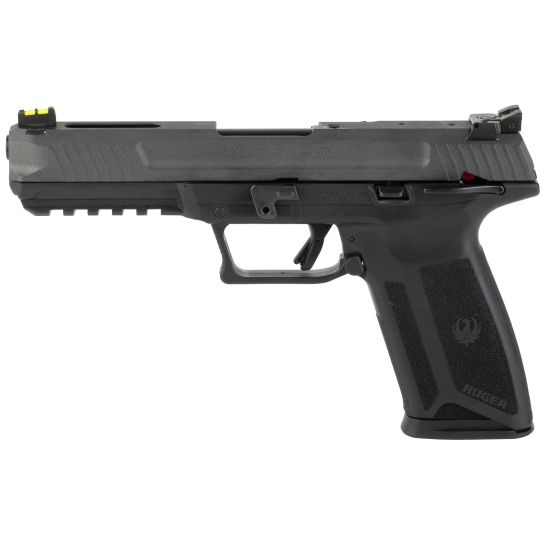
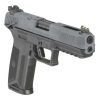
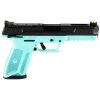
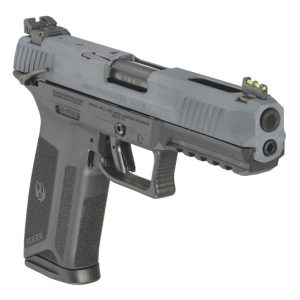
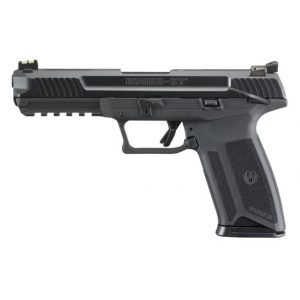
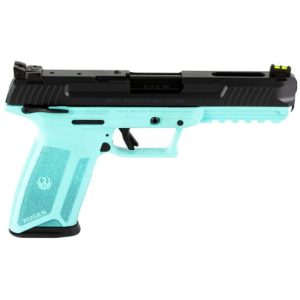
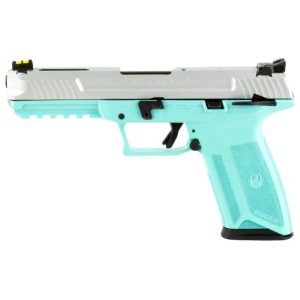
Reviews
There are no reviews yet.